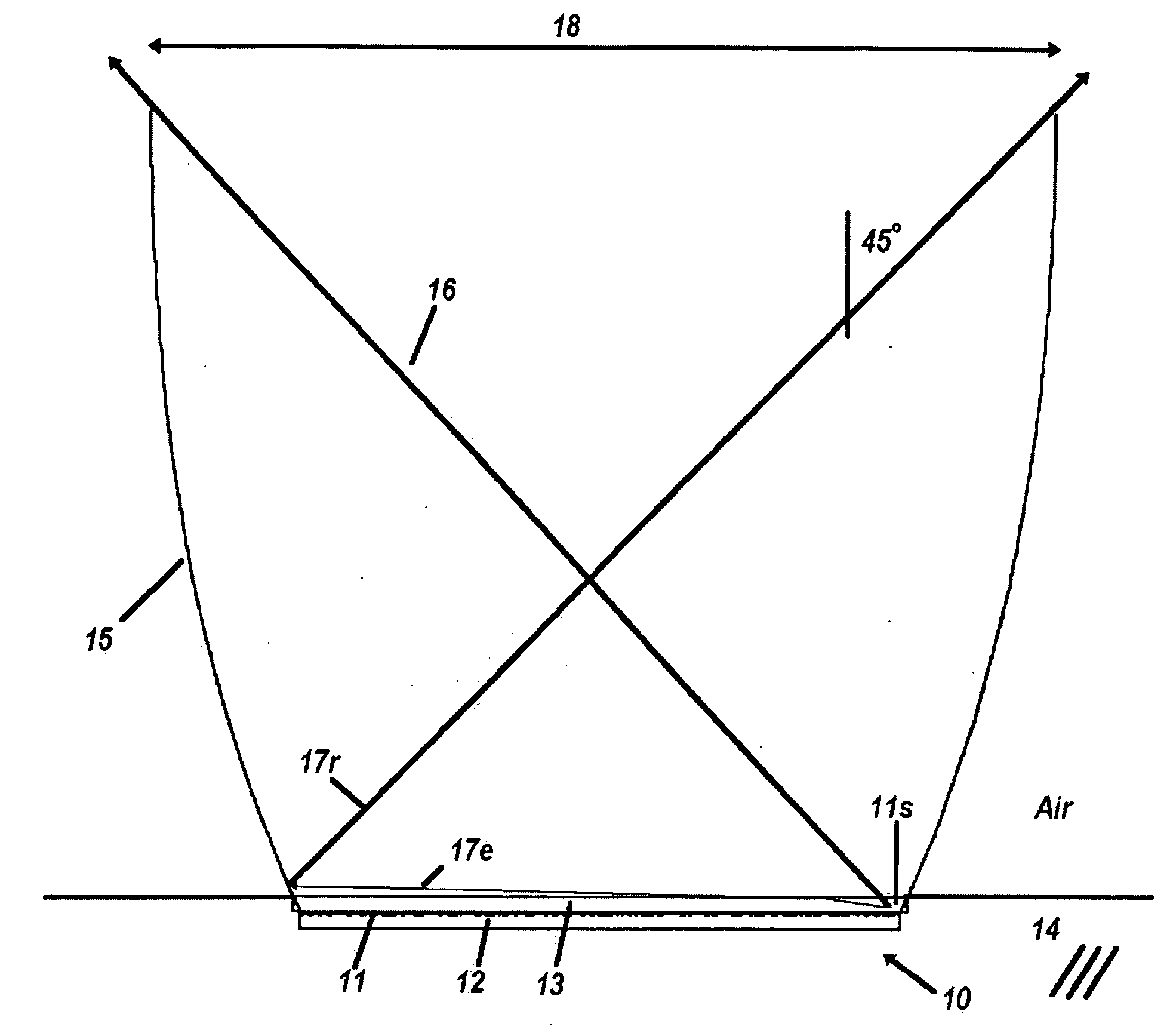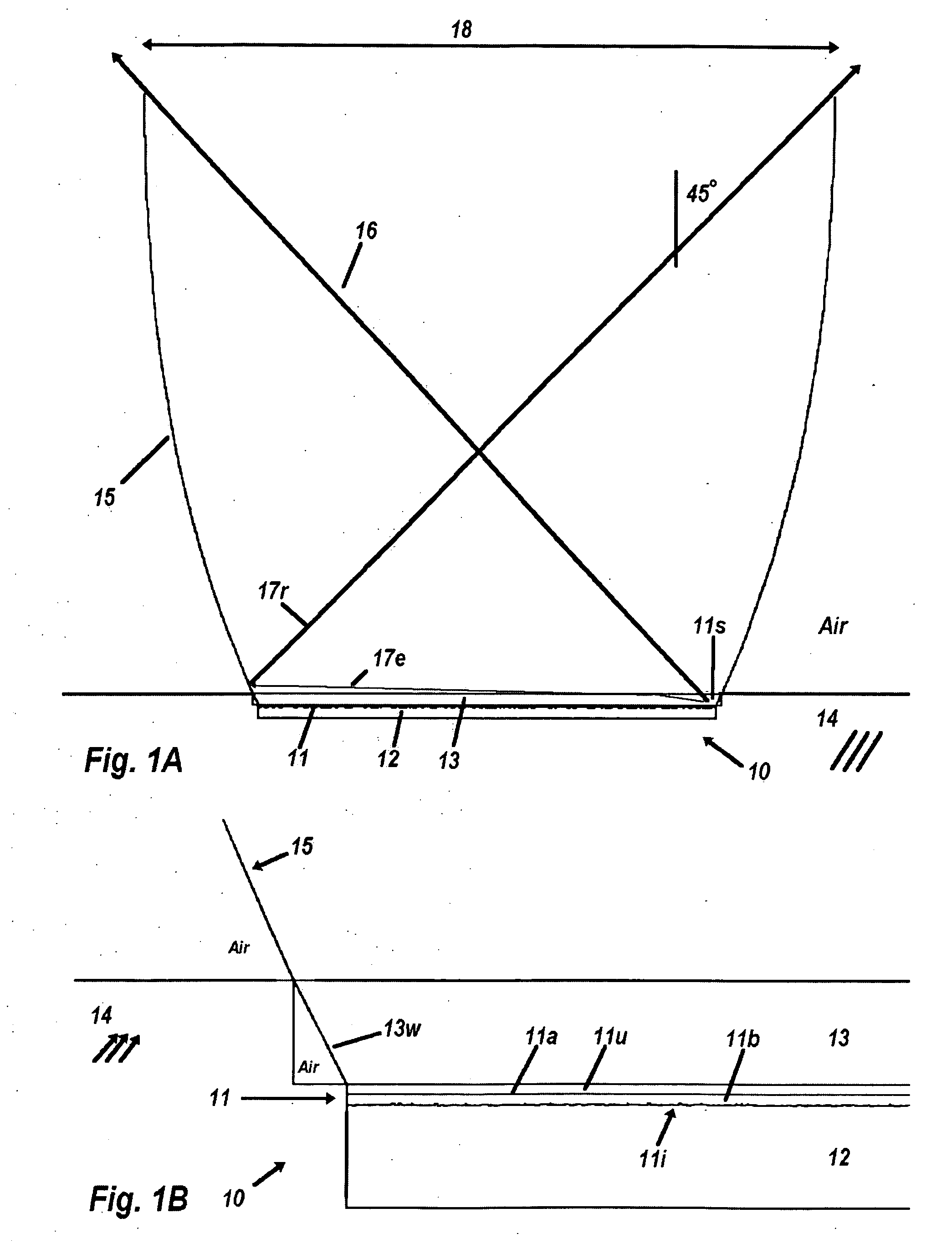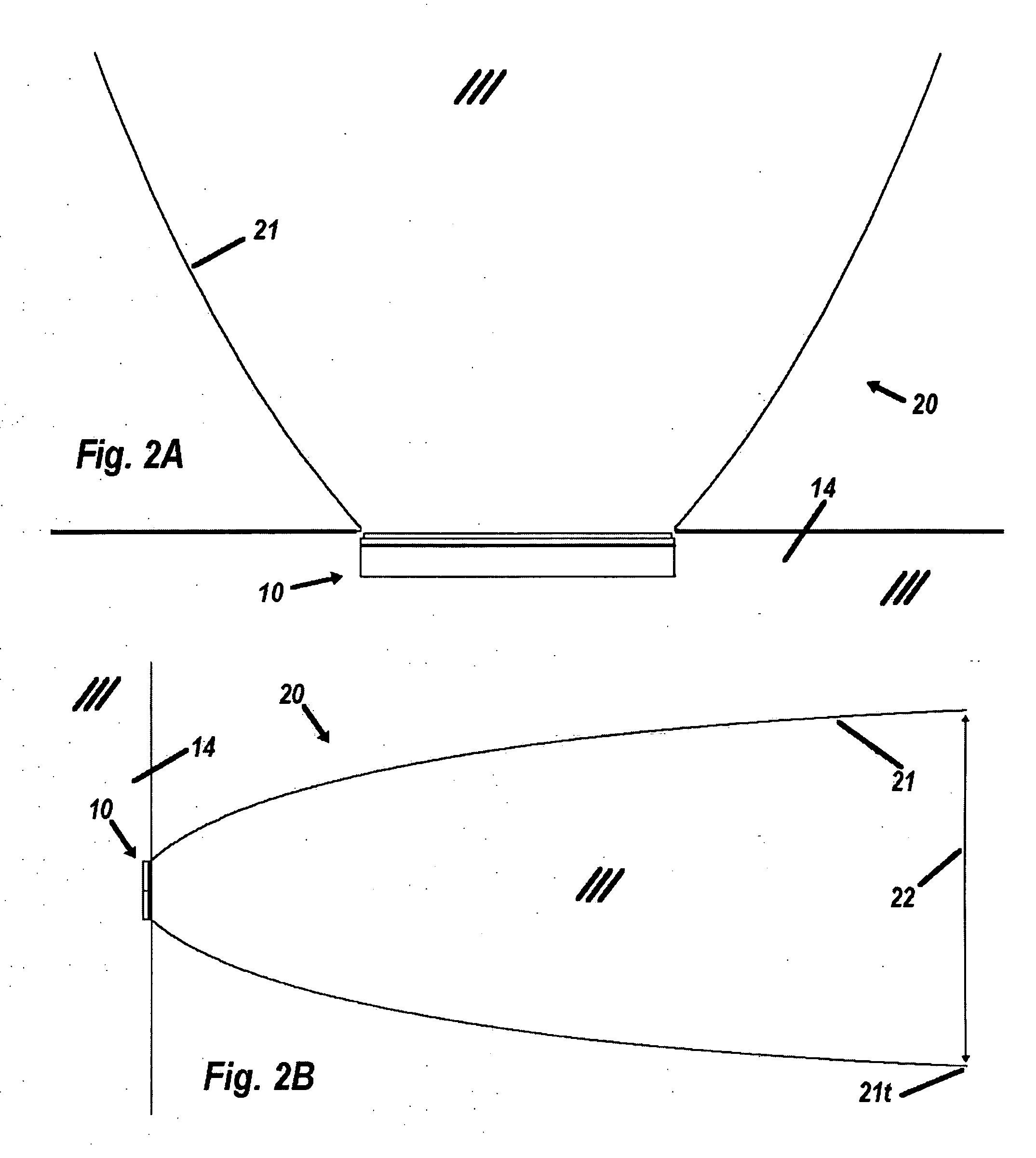Optical manifold for light-emitting diodes
a technology of light-emitting diodes and optical manifolds, which is applied in the field of optical manifolds for light-emitting diodes, can solve the problems of reducing the efficiency of light-emitting diodes, and reducing the total luminance, so as to achieve usefully restricted angular output and improve the uniformity of luminance and color
- Summary
- Abstract
- Description
- Claims
- Application Information
AI Technical Summary
Benefits of technology
Problems solved by technology
Method used
Image
Examples
Embodiment Construction
[0184] This invention is described in the following description with reference to the Figures, in which like numbers represent the same or similar elements.
[0185] Glossary of Terms and Acronyms
[0186] The following terms and acronyms are used throughout the detailed description:
angle rotatora device that delivers luminance from one plane to another lying at atilt to the firstCECcompound elliptical concentratorCPCcompound parabolic concentratorcross-CPCa three-dimensional (3-D) configuration having a 2-D CPC profile intwo orthogonal directionsdichroic filtera filter that has two distinct transmission peaksdome of LEDan approximately spherical LED cover made of transparent dielectricmaterialsedge-ray principlethe foundational principle of non-imaging optics, whereby adefining set of rays from the edge of an aperture areguaranteed to be delivered to the edge of another aperture,but the first aperture is not imaged onto the secondetenduethe optical manifestation of entropy, defined a...
PUM
 Login to View More
Login to View More Abstract
Description
Claims
Application Information
 Login to View More
Login to View More - R&D
- Intellectual Property
- Life Sciences
- Materials
- Tech Scout
- Unparalleled Data Quality
- Higher Quality Content
- 60% Fewer Hallucinations
Browse by: Latest US Patents, China's latest patents, Technical Efficacy Thesaurus, Application Domain, Technology Topic, Popular Technical Reports.
© 2025 PatSnap. All rights reserved.Legal|Privacy policy|Modern Slavery Act Transparency Statement|Sitemap|About US| Contact US: help@patsnap.com



